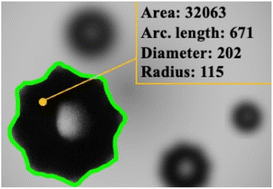Our new paper in the series on the study of wine (enology) and taste perception:
T. Aliev, I. Korolev, M. Yasnov, M. Nosonovsky*, and Ekaterina V. Skorb “Rose or white, glass or plastic: computer vision and machine learning study of cavitation bubbles in sparkling wines,” RSC Advances, 2025, 15, 5151-5158, DOI: 10.1039/d5ra00046g
This study presents a machine learning (ML)/Artificial Intelligence (AI) approach to classify types of sparkling wines (champagnes) and their respective containers using image data of bubble patterns. Sparkling wines are oversaturated with dissolved CO2, which results in extensive bubbling when the wine bottle is uncorked. The nucleation and properties of bubbles depend on the chemical composition of the wine, the properties of the glass, and the concentration of CO2. For carbonated liquids supersaturated with CO2, the interaction of natural and cavitation bubbles is a non-trivial matter. We study ultrasonic cavitation bubbles in two types of sparkling wines and two types of glasses with the computer vision (CV) analysis of video images and clustering using an artificial neural network (NN) approach. By integrating a segmentation NN to filter out irrelevant frames and applying the Contrastive Language-Image PreTraining (CLIP) NN for feature embedding, followed by TabNet for classification, we demonstrate a novel application of ML/AI for distinguishing champagne characteristics. The results show that the bubbles are significantly different to be classified by the ML techniques for different types of wine and glasses. Consequently, our study demonstrates that CV/AI/ML analysis of ultrasound cavitation bubbles can be used to analyze carbonated liquids.

Our previous work on wine and taste:
Wine and umami studies: bitter taste forms a 2D space!
S Shityakov, EV Skorb, M Nosonovsky, 2024, TAS2R taste receptor clustering suggests that bitter wine taste perception forms a 2D dataspace, J. Comp. Biophys. Chem. https://doi.org/10.1142/S2737416524500844
The color spaces, such as the RGB space, are 2D for humans because there are three types of cone cells with color photoreceptors (S, M, and L types) on a human retina, leading to two ratios of color signal intensities (S/L and M/L). It is much more difficult to quantify the sense of taste since dozens of receptors are involved in human taste perception. In this paper, we investigated the in silico molecular docking of 10 ligands relevant to wine tannins with 27 bitter taste receptors, TAS2Rs. Principal component analysis was used to determine the optimal mean number of clusters (n=3). As a result, the TAS2R proteins are categorized into three distinct clusters on the basis of their ability to bind bitter ligands. This suggests that bitter taste forms a 2D space.

Clustering of the molecular docking results on the basis of the ligand binding affinity values for the TAS2R proteins
MS Ashikhmina, AM Zenkin, IS Pantiukhin, IG Litvak, PV Nesterov, K Dutta, S Shityakov, M Nosonovsky, MA Korablev-Dyson, OY Orlova, SA Ulasevich, EV Skorb, 2024, Uncovering the taste features: Applying machine learning and molecular docking approaches to predict umami taste intensity of peptides Food Bioscience 62, 105358 https://doi.org/10.1016/j.fbio.2024.105358
The umami taste, often described as the fifth basic taste, plays a pivotal role in the culinary world, significantly contributing to the overall flavor profile and consumer satisfaction of food products. Precise prediction and enhancement of umami taste intensity using the identification of umami peptides can lead to groundbreaking advancements in the food industry. This study presents a novel approach to combine machine learning and molecular docking techniques. The machine learning algorithm is based on a cascade algorithm combining CatBoost and BERT models to predict the umami taste intensity of peptides accurately. Our research reveals that combinations of specific amino acids, such as aspartic acid with alanine or glycine and lysine with glycine or histidine, have been identified to enhance the umami taste in foods. The model is available as a user-friendly web server at https://taste.infochemistry.ru. This study contributes to the scientific understanding of taste perception and provides a valuable tool for the food industry to innovate and improve product quality by optimizing umami taste profiles.
Our previous work on using videos of bubbles to determine a composition of liquids:
New paper and journal cover. Clustering liquids with computer vision based on bubble images
M Nosonovsky, E V. Skorb et al. Automatic image processing of cavitation bubbles to analyze the properties of petroleum products, Digital Discovery, 2024, 3, 1101 – 1107
We have developed a new computer vision method of automatic image processing of cavitation bubbles to classify petroleum products with different octane numbers (ONs) using an artificial neural network (ANN). Ultrasonic irradiation induces cavitation bubbles, which exhibit growth, oscillations, and resonance shapes. Gasoline solutions may have different physical and chemical properties. While a precise understanding of how these properties impact bubble dynamics is challenging, training the ANN algorithm on bubble images allows classification of gasoline bubbles with different ON values. The integration of the ultrasonic cavitation method with computer vision and artificial intelligence techniques offers a promising way for real-time ON assessment in liquid flow.
The paper was selected for the journal front cover

Our previous study on this topic was:
I. Korolev , T. A. Aliev , T. Orlova , S. A. Ulasevich , M. Nosonovsky and E. V. Skorb , When bubbles are not spherical: artificial intelligence analysis of ultrasonic cavitation bubbles in solutions of varying concentrations, J. Phys. Chem. B, 2022, 10.1021/acs.jpcb.2c00948 126 , 3161 —3169
